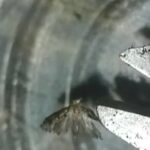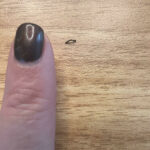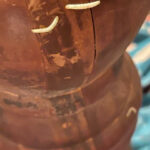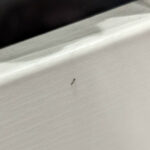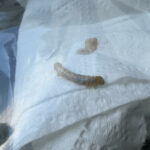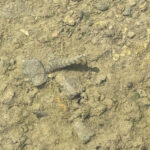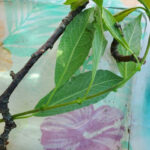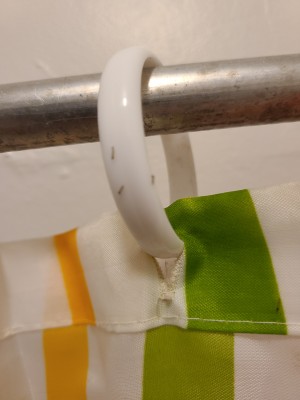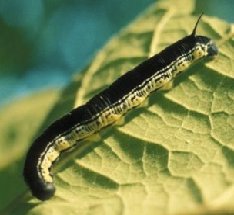
On the All About Worms Facebook page, we were asked what causes Catawba worms to leave a Catalpa tree after many years. (We could have just as easily written “what causes Catalpa worms to leave Catawba trees,” as “Catalpa” and “Catawba” are interchangeable.) After many years of enjoying the leaves of a tree, why would Catawba worms simply leave? This is a difficult question to answer because there are various reasons why Catawba worms might leave any given Catalpa tree, and why they left our reader’s trees in particular is impossible for us to say without knowing anything about his circumstances. He merely asked “what will make” the worms leave. To a generic question we can only provide a generic answer, so we’ll explain some of the general reasons Catawba worms leave Catalpa trees.
Evidently, Catawba worms are on everyone’s mind recently, as this is the second question we received in the last few days about Catawba worms. In fact, the last question we answered, which was about attracting Catawba worms to Catalpa trees, was closely related to the question we are presently dealing with. It makes sense that people are asking about Catawba worms because this is the time of year that they should be out on people’s trees. If they aren’t there, this is not only puzzling, but cause for concern, considering that many people plant Catalpa tree precisely to attract Catawba worms, which make superb fish bait.
What causes Catawba worms to leave a tree depends in part on the meaning of the word “leave.” If this means that the worms were on the trees in years past, but did not show up at all this year, this might mean that the trees are no longer attractive places for the worms, which are actually caterpillars, to feed. As a general rule, Catawba worms don’t damage the trees they feed on, but several years of severe infestation can eventually weaken and kill a tree. Thus, perhaps our reader’s trees aren’t healthy enough to support Catawba worms any longer. It is also possible that the caterpillar will still come out sometime this year. Their emergence is heavily dependent on the weather, as the weather dictates when a tree grows leaves. Since Catawba worms eat leaves, they won’t be attracted to a tree that doesn’t have a healthy set of leaves. At this point, with the summer being well underway, it seems unlikely that the emergence of Catawba worms could be so delayed, but it’s not inconceivable. Finally, according to an excellent overview of Catalpa Sphinx moths (the adult form of Catawba worms) by an entomology professor at Auburn University, the patterns of Catawba worms are often sporadic and unpredictable. Certain trees are infested while other trees that appear every bit as suitable for the caterpillars are left alone. They will also infest a tree or group of trees for a few years, and then simply stop infesting it for several years. Why they behave in such a seemingly random way isn’t perfectly understood.
If the word “leave” is meant to indicate that the Catawba worms were on the trees earlier this year, but now are not, this might mean that the caterpillars were decimated by one of their many natural predators, which include various types of insects and birds. Wasps are especially common predators. The females will lay white eggs inside a Catawba worm, and then the wasp larvae will hatch and start feeding on the caterpillar. Not surprisingly, the Catawba worm is not long for this world after it has been attacked by a wasp. So, even if a tree had a fairly robust infestation earlier in the spring/summer, the Catawba worm population can be quickly suppressed by predators.
Again, we aren’t sure what our reader’s situation is, but one of the factors listed above is probably responsible for the dearth of Catawba worms this year. The trees might be unhealthy or the predators might be out in full force, or everything might be perfectly fine with the trees, but the caterpillars are still not infesting it. Plenty of things will keep Catawba worms from Catalpa trees, and sometimes they simply stay away for seemingly no reason at all.
All About Worms is always free, always reader-supported. Your tips via CashApp, Venmo, or Paypal are appreciated! Receipts will come from ISIPP Publishing.
You might also find these guys interesting!




